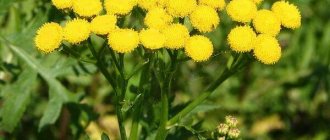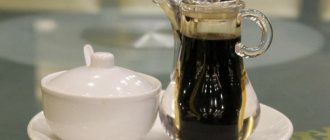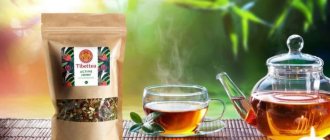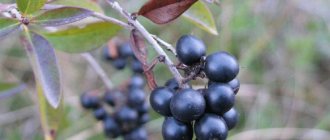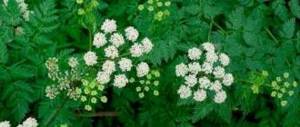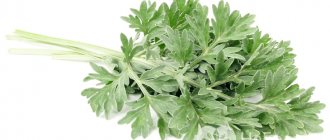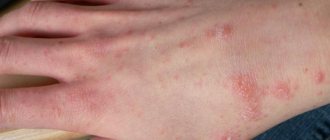Many people know the expression: “It’s like you’ve eaten too much henbane.” But few people know that this plant is a distant relative of the potato, that it is actually poisonous, and that the saying, denoting strange, inappropriate behavior, appeared for a reason. So what is henbane?
Henbane is a biennial poisonous herbaceous plant belonging to the nightshade family. The plant has a specific intoxicating aroma. Henbane is represented by a long stem (about 40–70 centimeters), elongated leaves and large yellowish flowers. The base of the flower is represented by dark blue veins. This plant ripens at the end of August and September. When ripe, the fruit resembles a capsule filled with gray poppy-like seeds. Poisonous henbane plants are ubiquitous. But more often such a plant can be found in the North Caucasus, East and Central Asia.
Botanical description of henbane
Henbane belongs to the biennial plants of the Solanaceae family. The weed is covered with soft glandular hairs, which emit a heavy, intoxicating odor. The tap root system is thick and fleshy. The stem is straight and branched, about 1 meter high. Henbane leaves are arranged alternately and have a grayish green color. The lower ones are petiolate, the upper ones are sessile. The edges of the leaf blade are notched.
The flowers are large, about 3 cm in length. Placed on the tops of stems. Henbane blooms from the first month of summer until October. One plant can produce about 10,000 seeds. Reproduction is only by seed.
The henbane fruit is a multi-seeded capsule with a lid that opens after ripening. The seeds are small and flat with a pitted surface. The color is brown, slightly reminiscent of poppy seeds. The fruits ripen in August.
Interesting to know! The use of black henbane in folk medicine began more than 1000 years ago. Avicenna (the first famous doctor) wrote at that time: “Henbane is a poison that deprives memory, causes suffocation and insanity.”
From the description of black henbane and the characteristics of its chemical composition, you can find out all the medicinal properties of the plant. The herb must be used very carefully, as it contains many toxins and alkaloids.
Growing, collecting, storing plants
Black henbane is considered a wild plant, and before planting it, it is better to look at the photo and make sure you want to see this plant in the garden. It is much easier to buy dried herb at a pharmacy . But if there is a need to grow black henbane yourself, then first you should choose a light area with fertile soil and dig it up with fertilizers.
Seeds are planted in late autumn or early spring in furrows 3 cm deep and at a distance of 60 cm between rows. If the seeds are sown in the spring, then they need to be stratified for 42-45 days and planted to a depth of 1.5-2 cm. All care consists of watering the plant in severe drought, loosening the soil and removing weeds.
For medicinal purposes, it is best to collect the leaves and stems of the plant during flowering. The seeds are collected as they ripen. Dry everything by laying it out in a thin layer on a table in a well-ventilated room. After working with black bleached hands, you should wash them thoroughly. Store everything in bags or jars, dry and away from children, as black henbane is very poisonous.
Do you use henbane? Are you afraid to use a poisonous plant? What results did this give you? Tell us in the comments.
Spread of henbane
Blackota was used by healers of Ancient Egypt, Rome and Greece. Asian healers prepared medicinal remedies from seeds and leaves. The wind carries the seeds over long distances, so the plant's distribution area is quite wide. Henbane grows along roadsides, in vegetable gardens, fields, landfills and in deserts. Rarely, but still, henbane is found in forests, plains and meadows.
Black henbane can be found in Africa, Australia, North America and Eurasia. On the territory of our country, the grass is found in the south of Siberia, the North Caucasus, the Black Sea region and the central European part.
Notes
- For the convention of indicating the class of dicotyledons as a superior taxon for the group of plants described in this article, see the section “APG Systems” of the article “Dicotyledons”.
- ↑ 123
According to the book “Encyclopedia of Medicinal Plants” (see section Literature). - Belen // Encyclopedic Dictionary of Brockhaus and Efron: in 86 volumes (82 volumes and 4 additional). - St. Petersburg, 1890-1907.
- ↑ 12
Encyclopedic Dictionary of Medicinal, Essential Oil and Poisonous Plants / Comp. G. S. Ogolevets. - M.: Selkhozgiz, 1951. - P. 35. - 584 p. - ↑ 1234
Atlas of medicinal plants of the USSR / ch. ed. N.V. Tsitsin. - M.: Medgiz, 1962. - P. 76. - 702 p. - ↑ 1 2 Blinova, K. F. et al.
Botanical-pharmacognostic dictionary: Reference. manual / ed. K. F. Blinova, G. P. Yakovleva. - M.: Higher. school, 1990. - P. 171. - ISBN 5-06-000085-0. - Abrikosov Kh. N. et al.
Black henbane // Dictionary-reference book for beekeepers / Comp. Fedosov N. F. - M.: Selkhozgiz, 1955. - P. 22. - Shakespeare Lovers Conference
Henbane roots
The root system is powerful. It is prepared in advance and used for medicinal purposes. The color and shape resembles parsley roots. A large number of alkaloids were found in the root system.
The main alkaloids can be distinguished:
- scopolamine;
- hyoscyamine;
- hyoscine;
- a-belladonine;
- tropic;
- apohyoscin.
The root of blekota is used for gout, rabies, hematuria, and the juice is used to treat liver diseases. Infusions and decoctions can be used for abscesses and rheumatism.
Literature
- Poyarkova A.I.
Genus 1317. Henbane - Hyoscyamus L. // Flora of the USSR: in 30 volumes / started at the hands of. and under chap. ed. V. L. Komarova. - M.; L.: Publishing House of the USSR Academy of Sciences, 1955. - T. 22 / ed. volumes B.K. Shishkin, E.G. Bobrov. - pp. 93-99. — 861 p. — 3000 copies. - Gubanov I.A. et al.
Illustrated guide to plants of Central Russia. In 3 volumes - M.: Scientific T. ed. KMK, Institute of Technology. research, 2004. - T. 3. Angiosperms (dicotyledonous: dicotyledonous). - P. 165. - ISBN 5-87317-163-7. - Maznev N.I.
Encyclopedia of medicinal plants. — 3rd ed., rev. and additional - M.: Martin, 2004. - P. 92-93. — 496 p. — ISBN 5-8475-0213-3.
Poisons in henbane
Despite the widespread use of black henbane in folk medicine, the plant is very poisonous. Roots and seeds are especially dangerous. Incorrect preparation or non-compliance with the recipe can cause irreparable consequences.
Blackhead poisoning is not a rare occurrence today. Most often, such cases are observed among children who mistake the grass root for a white carrot, the seeds for poppies, and the attractive large flower will leave few people indifferent (and sometimes it’s enough just to smell it).
You can even become poisoned through the meat or milk of an animal that has eaten this plant. This severe toxicity is due to the chemical composition of the herb. Scopolamine and atropine are poisonous plant alkaloids. Once in the human body, these toxins can affect the nervous system, slowing down the functioning of the pancreas, salivary and sweat glands.
Taxonomy
Type black henbane
is
included in the genus Henbane (
Hyoscyamus
) of the tribe
Hyoscyameae
of the subfamily Solanaceae (
Solanaceae
)
of the order Solanaceae ( Solanales ).
| 4 more families (according to the APG II System) | 6 more tribes (according to the APG II System) | about 20 more species | ||||||||||||||||||
| order Solanaceae | subfamily Solanaceae | genus Belen | ||||||||||||||||||
| Department Flowering, or Angiosperms | Solanaceae family | tribe Belenaceae | type black henbane | |||||||||||||||||
| 44 more orders of flowering plants (according to the APG II System) | 6 more subfamilies (according to the APG II System) | 6 more births | ||||||||||||||||||
Symptoms of poisoning
The manifestation and severity of symptoms will depend on the amount of toxins that enter the body and the weight of the victim. Intoxication can also occur after the juice of the herb gets on the mucous membranes of the nose and eyes. Young children tend to have more severe symptoms, and this is due to the child's low weight. The first signs of poisoning can be observed after 20 minutes.
A mild degree of intoxication is manifested in the following:
- rapid pulse;
- increased body temperature;
- dryness in the mouth and throat;
- Strong headache;
- drowsiness;
- dry skin;
- double vision;
- red rash;
- hallucinations, delusions;
- foam from the mouth with an unpleasant odor;
- severe pain in the abdomen and around the navel.
After first aid is provided, secondary narcotic sleep occurs. The victim's condition returns to normal immediately after waking up.
In the case when black henbane poisons enter the body in large quantities, the following changes can be observed:
- disorientation;
- weak palpation of the pulse;
- severe cramps;
- the skin takes on a bluish tint;
- urinary and fecal incontinence (stool is sticky, liquid, white).
If medical assistance is not provided in a timely manner, then the blecota toxins will continue to be absorbed into the blood, the victim’s breathing will become weak, and the pulse will slow down. The death will occur within 24 hours.
Contraindications
Although black henbane has many beneficial properties, it remains poisonous , and its improper use leads to serious poisoning of the body .
If, after consuming it, dry mouth and difficulty breathing occur, the pupils dilate, the pulse quickens and hallucinations begin, you should immediately rinse the stomach and take the patient to the nearest hospital department.
Also, preparations based on black henbane are contraindicated in any quantity for:
- glaucoma;
- under 12 years of age;
- breastfeeding;
- pregnancy;
- allergies.
Help with poisoning
As soon as the first symptoms of intoxication appear, you should immediately call an ambulance. When poisoned with bleached black, a person does not naturally vomit; inducing it artificially will also be problematic. Therefore, the first action of doctors will be aimed at washing the stomach.
Since the throat becomes dry during poisoning, the probe must be lubricated with oil. For washing, you can use activated carbon or soda solution. If for some reason it is not possible to rinse the stomach, then the victim is given 3 tbsp. crushed coal diluted in water. Afterwards, you need to ensure physical and psycho-emotional peace.
Paracetamol or Ibuprofen is given at elevated temperatures. Also, in case of severe poisoning, laxatives can be used.
Medicinal properties and uses of henbane in medicine
Black henbane has been used for medicinal purposes since ancient times. The leaves, root, stem, and tops of the medicinal ornamental plant along with the flowers are used. After touching the grass, be sure to wash your hands.
The medicinal properties of black henbane are as follows:
- relieves pain;
- reduces spasms of smooth muscle muscles;
- eliminates senile tremors;
- normalizes the production of sweat glands;
- relaxes the muscles of the bronchi;
- improves airway patency in asthma;
- has a hypnotic effect.
The beneficial properties of the plant are directly related to the medicinal use of blecota in medicine. But, despite all the benefits, the herb is very rarely used in its pure form. To use it in folk medicine, it must first be prepared. The collection of raw materials begins in the summer, if the plant has reached two years of age, or in the fall, when the henbane is still young.
It is worth understanding that only those products and dosages that the doctor prescribes will bring health benefits. Self-medication with henbane is strictly contraindicated!
Black henbane treats:
- pneumonia;
- headache;
- furunculosis;
- gout;
- colds;
- neuralgia;
- muscle pain.
Tibetan and Indian healers use henbane seeds to treat infectious diseases. Also, seeds and leaves are raw materials for the preparation of painkillers, which are used for tumors, inflammations, and abscesses. An ointment based on henbane and fatty sour cream treats bone tuberculosis. For insomnia and neuralgic diseases, consume a decoction. Mongolian medicine treats black bleached anthrax, diphtheria, erysipelas and smallpox.
The leaves of this wild plant, infused in alcohol with a small addition of vegetable oil, are used to rub joints for arthritis and rheumatism, as well as for colds and severe coughs. You can use this same product to make lotions to get rid of furunculosis.
The above-ground part of the plant has also found its use in folk medicine. The crushed root is added to the water during bathing. This helps with problems such as abscesses, boils, sciatica. The extract from the seeds (which is later greatly diluted) is used to treat some eye diseases and menstrual irregularities.
In addition, using the root, dental diseases can be cured in a matter of days. Black henbane should be used with extreme caution to treat asthma, stomach ailments, intestinal colic and liver diseases.
Atropine and scopolamine are poisons that cause intoxication of the body when consumed by night blindness. These alkaloids block nerve endings, as a result of which a person experiences most of the anxiety symptoms.
Area
Black henbane is unpretentious. It grows almost everywhere, but is most widespread in the following countries and continents:
- North America;
- Australia;
- countries of Central Asia;
- Baltics;
- Ukraine;
- countries of Western Europe;
- some African countries.
In Russia, this poisonous plant has taken root everywhere except the northernmost regions. It prefers fertile soils, but, in principle, it does well in less comfortable conditions.
Places where you can see henbane are garbage heaps, vacant lots, the edges of fields and vegetable gardens, along highways (like many wild plants). It hardly grows densely, mostly only in small groups or singly.
